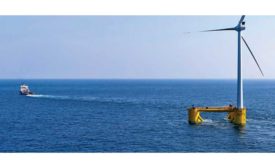- NEWS
- PROJECTS
- BUSINESS
- TALENT
- REGIONS
- TECH
- PRODUCTS
- IDEAS
- COSTS
- LISTS
- INFOCENTERS
- EVENTS
- Award of Excellence
- Best of the Best Project Awards
- FutureTech
- Groundbreaking Women in Construction EAST
- Groundbreaking Women in Construction WEST
- Global Best Projects Awards
- LA Infrastructure Forum
- NY/NJ Infrastructure Forum
- Regional Best Projects
- Seattle Infrastructure Forum
- Top 25 Newsmakers
- Upcoming Events
- Webinars
- MORE
Power & Industrial
Global Records
Solar power generation is on a roll, partly propelled from plummeting costs
Read More
Coal Fired Power Plants
Opponents Set To Battle TVA On Coal Ash Cap-and-Close Plan
Opponents want wastes removed, noting a disastrous 2008 site spill.
Read More
International Finance
World Bank Says Private Infrastructure Financing Dipped in 2015
Investment soared in Turkey but fell sharply in Brazil
Read More
Engineers Say Input Was Ignored in Ontario's New Climate Plan
Advocacy group protests to the premier the lack of engineering analysis
Read More
The latest news and information
#1 Source for Construction News, Data, Rankings, Analysis, and Commentary
JOIN ENR UNLIMITEDCopyright ©2025. All Rights Reserved BNP Media.
Design, CMS, Hosting & Web Development :: ePublishing










